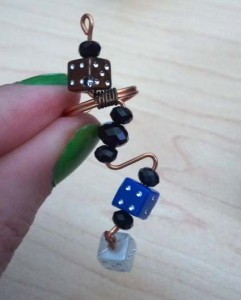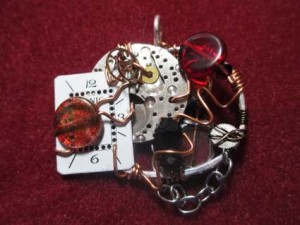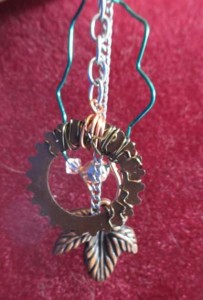
The Atlantic posted an article this morning about Final Fantasy dubbed: “Casting ‘Revive’ on Final Fantasy.” My cactaur has demanded that I speak on the subject, if only because I still need to think about the post I was going to write. 10,000 needles really sting.
Final Fantasy X. Major hit, right? Romance, tragedy, action, camp, questing. A very traditional RPG-style game and a step up from VIII and IX. There was still a dungeon crawl aspect to the game, but the story, easter eggs, and visuals were good — so who cares? Then came X-2 which continued the story and followed three female characters. This was the Charlie’s Angels of the Final Fantasy franchise. It attempted to emulate what was cool about X, but erred on the side of camp.
XII was a miss for me. I played through it twice, but I didn’t “get” the story at all. It felt distant and while there was more free-range than X? It had more of an epic fantasy feel a la IX than a science fantasy feel. I just didn’t care.
Then XIII came out. I was happy to see moogles returned to their former glory. I did not like the romantic storyline between Snow and Serah. Sazh… Oh, what can I say about THAT stereotype… Lightning kicked ass, but her character was pretty flat. I AM A PROUD SOLDIER WHO WILL ALWAYS DO HER DUTY. And I didn’t like Vanille. The sound effects when she moved killed me. In fact… one might say XIII was predictable. Two-dimensional even. I mean, I remember the ending from X, from IX. I remember being surprised. Shocked. Not “meh.”
Again, XIII was a fairly linear game experience with a time-sensitivity element to it. There were some X-ish overtones, like going back to certain points and fighting specific classes of monsters. The combat in this game was a-mazing. LOVE! And though I say the game was 2D, oh my moogle… There was depth and the time sensitivity of the l’cie versus the c’ieth was brilliantly done. That tied the characters together on their quest, but it was a “forced” tie — they had no choice. So, unlike X, the tension was as a group rather than on an individual basis.
On the ending, I had the same problem with XII; I didn’t understand Orphan at all. (Possibly because I couldn’t hear what he was saying.) So my emotional impact was more focused on beating Orphan than caring about him. Meh. Orphan boss battle requires a specific configuration as well, and my latest play-through I broke the game and got stuck. I wanted to get a lot of CP (because I was doing the sidequests on the Plains) so to do that I’m on the last board. Only… You can’t go back and the only way forward is to fight Orphan — which is a ridiculously long bloated Bartholomew hot mess on moldy toast. Stringing multiple boss battles together without saving in between is cause for migraines. FUN TIMES!
XIII-2? Total game-changer. This was a non-linear game. A time travel — LET ME REPEAT THAT — A TIME TRAVEL GAME. Still, you had beats of a story that were strung together, but this had more of a character emphasis than a “Here’s a troupe traveling around!” feel to it. Plus, you picked and chose what modules to play through while unlocking other branches of the story. I liked XIII-2 better than XIII by quite a bit, and I feel that it would have been on the level of X for me with the exception of ONE thing. The ending. I threw the controller. I did. It was, by far, the worst ending possible for any game I have ever played. How bad was it? It was so bad, my neighbors showed up at my door to ask me if anything was wrong.
THAT BAD.
Enter Skyrim. (Yep, I still haven’t played through Skryim yet and I doubt I ever will finish this.) This is now the gold standard of gaming. I feel that this game, when combined with MMOs, has a profound impact on what gamers expect of Final Fantasy. The ability to submerse yourself in a FF world and not be constrained by maps or linear play — I mean this is partly why Dragon Age has a mission/sub-mission system where you can play the sub-plots in multiple orders but still get the main plot. There’s the illusion of freedom to avoid drag.
Here’s what I want out of a Final Fantasy game:
- Great characters.
- To be surprised.
- Story reveal that isn’t an info dump.
- Layers of challenges. XIII’s combat system nailed it, but easy/hard/expert would be grand, too!
- Being able to unlock new boards because of time/XP earned. (e.g. Like the secret boss fight level on X-2 in Via Infinito
- Recurring characters like the chocobos, moogles, and cactaurs
- Ability to play the story and either avoid/dive into dungeon crawling
- Ability to play as multiple characters.
- Ability to choose sub-plots and have that impact the main story/character interactions.
- An innovation unique to that iteration. e.g. FF XIII has the time travel aspect which is drawn out more and more with each sequel. Awesome!
And that’s pretty much about it. Love the soundtracks; love the franchise. I’m not sure if I need a Skyrim-based FF game would work, but I do know one thing — in an RPG-style video game? Story does matter.
Mood: I hear a snow plow. FAAAAAAAAAHHHHHHHHHHH!
Caffeinated Beverages Consumed: There was coffee. There was tea.
Work-Out Minutes Logged Yesterday: Horizontal. I had the plague.
In My Ears: Fish tank. It needs to be cleaned and I’m avoiding it.
Game Last Played: Sonic All Star Racing Transformed
Book Last Read: Lovecraft’s Monsters anthology
Movie Last Viewed: Looper
Latest Artistic Project: National Craft Month
Latest Fiction/Comic Release: Last Man Zombie Standing
Latest Game Release: Freedom Flyer
What I’m Working On: Primarily tie-in games work and novels.









Learning from Penguins
I cannot think of a story more apropros to what happens online when a topic goes viral, save the Jenny McCarthy autism vs. vaccines debate, than the Great Penguin Sweater Fiasco. To sum up what happened, in 2011 (according to the timestamp of Mike Dickison’s article I quoted below) there was an oil spill in Australia. Thousands of penguins were affected so online activists (or charitable people, if you prefer) put out a call for sweaters since that was a solution to resolve the problem, similar to what happened years earlier.
Why did this happen? Forget the penguins for a moment. We already know why bad information goes viral. Reading comprehension isn’t the greatest and that is exacerbated by the way in which information gets shared online. There is no sense of time on the internet and it’s not common practice to read the time stamp on articles or find fact-based updates that refute earlier points. That, combined with the fact folks get paid for eyeballs on the page (e.g. free sites supported by advertising) — drama is a business. But here? The Great Penguin Fiasco wasn’t drama, it was the exact opposite of that. There was a desire to help, a need to do something when all other options failed, and it went viral.
Replace penguins with people getting upset about purple underwear. Fall 2011: Purple underwear is totally acceptable. Spring 2013: Can’t wear purple underwear because it’s a major faux pas. Spring 2014: Purple lipstick is a major faux pas. Or is it? Donatella Versace backpedaled when confronted with purple lipstick worn in this photo (dated 2011). Star Trek celebrities seen taking pictures in support of purple lipstick. Upsets the fanbase. Manufacturers called to stop making purple lipstick. An oversimplification at best, true, but non-issues tend to pop up just as easily as real tragedies do. Online, there is no difference between a cat picture and an oil spill.
The penguin sweaters are a physical manifestation of the word “viral”. Thousands upon thousands of penguin sweaters is a picture that’s seared into my brain whenever news (bad or good) is shared online. This is what viral communication can do. Every sweater is an action someone took to help, not knowing what the end result would be. This is impressive in its scope, considering one has to know how to knit and take the time to make these sweaters. Ironically, this has now evolved to a new call.
So, instead of knitting sweaters for the penguins, they’re asking volunteers to create free product. That is a much different tack on the volunteer effort. Think what you will of that, by the way. If the sweaters are being used to raise money for conservation efforts, is that necessarily a bad thing? A moral dilemma to be sure but… How many knitters read the fine print?
Lessons from the Great Penguin Fiasco? I feel they include the following:
And last, but certainly not least…
My name is Monica and, thanks to an article on penguins, I was able to confirm that yes, I have finally made my peace with the internet. (Thank you, penguins — and Mike!) You may have a different approach to dealing with hot button topics online, and that’s okay. As always, I don’t seek to educate or instruct, but to share and empower. To me, encouraging you to critically think and use your beautiful brain is more powerful than dictating what you should believe.
Back to writing. Have a wonderful day!!!!
Mood: May I never stop learning.
Caffeinated Beverages Consumed: I over-caffeinated and repeating that today.
Work-Out Minutes Logged Yesterday: Chased my cats everywhere. They own me.
In My Ears: Bulletproof (Tiborg Remix) by La Roux
Game Last Played: Sonic All Star Racing Transformed
Book Last Read: Lovecraft’s Monsters anthology
Movie Last Viewed: Looper
Latest Artistic Project: National Craft Month
Latest Fiction/Comic Release: Last
ManZombie StandingLatest Game Release: Freedom Flyer
What I’m Working On: Primarily tie-in games work and novels.